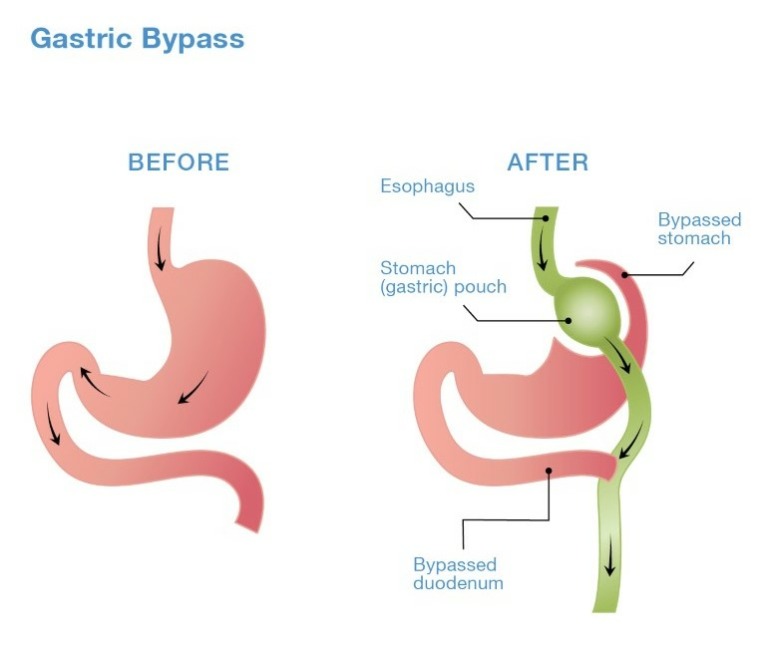Gastric Bypass
Overview
Gastric bypass surgery, also known as “Roux-en-Y gastric bypass,” is a restrictive and malabsorptive operation that reduces the size of the stomach and skips, or bypasses, part of the intestine where nutrients are absorbed. There are also hormonal changes with gastric bypass that allow the body to lose excess weight.

Performed for over 50 years, gastric bypass is a proven procedure that has become extremely safe and less invasive over the years. About 21% of bariatric surgery done in the U.S. as of 2020 are gastric bypass operations.
Appropriate for patients with severe type 2 diabetes, gastroesophageal reflux disease (GERD) disease and other weight-related health conditions, gastric bypass patients generally lose an average of 75% of their excess body weight over a 12 to 18 month period, though this can vary by individual.
Procedure
Gastric bypass surgery is performed laparoscopically or robotically, using instruments passed through small incisions in the abdomen. The operation does require general anesthesia. The surgical process is generally done in three steps:
First, the surgeon uses a surgical stapler to separate a sizable portion of the stomach. This creates a small gastric pouch, about the size of an egg, in the upper section of the stomach. Because this pouch is much smaller than the original stomach, patients feel full after eating. The excluded portion of the stomach is usually left in place.
Next, the surgeon divides the small intestine into two parts, attaching the lower portion of the intestine directly to the newly created stomach pouch. This allows food to bypass both most of the stomach and a portion of the small intestine. As a result, the body absorbs fewer calories from food eaten.
Finally, the surgeon connects the upper portion of the small intestine to the lower part of the small intestine. This part of the procedure lets digestive juices flow from the bypassed portion of the intestine to the lower part of the small intestine.
The Hoag Bariatric Weight Loss Program is dedicated to providing the highest level of patient care, based on best practices that lead to quality outcomes. Meet our our bariatric team.
